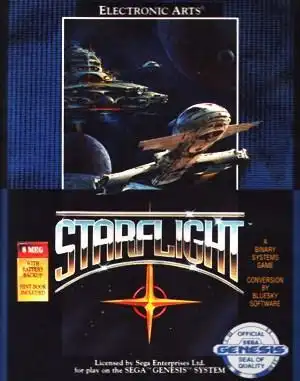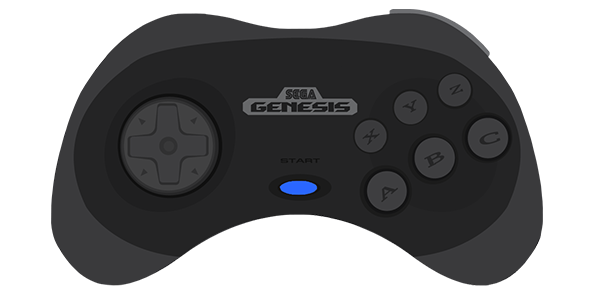Revisiting Starflight: The Epic Space RPG on Sega Genesis
Remember a time when space exploration in video games felt truly vast and unknown? For many Sega Genesis owners in the late 80s and early 90s, that feeling was delivered by a game called Starflight. While originally a PC title, its port to the Genesis brought a deep, complex, and surprisingly open-ended science fiction role-playing experience to console players.
This wasn't your typical side-scrolling action game or linear quest. Starflight on the Genesis dropped you into a universe filled with planets to explore, alien races to encounter, resources to mine, and mysteries to unravel. It was ambitious, perhaps even revolutionary, for a console game of its era.
What Made Starflight Special?
At its core, Starflight is about exploration and survival. You captain a starship, assemble a crew from various alien species (each with unique skills), and venture out from your home planet, Arth. The goal? To find new worlds, gather resources, and uncover the cause of strange stellar phenomena threatening all life in the galaxy.
Key elements that set it apart included:
- Vast Open World: A procedurally generated galaxy with hundreds of star systems and planets. You could go almost anywhere from the start.
- Non-Linear Gameplay: While there's a main quest, you're free to explore, trade, mine, or just see what's out there.
- Crew Management: Hire and customize your crew members, assigning them roles like science, navigation, communications, and engineering. Their skills mattered!
- Resource Management: Fuel, minerals, and artifacts were crucial for survival and upgrading your ship. Mining and trading were essential activities.
- Alien Interaction: Encountering and communicating with diverse alien races, sometimes peaceful, sometimes hostile. Dialogue choices were important.
- Ground Exploration: Landing on planets allowed you to explore terrain, find resources, and discover ancient ruins or alien bases using a lander vehicle.
The Starflight Experience on Sega Genesis
Bringing a game as complex as the original PC Starflight (which often required a hefty manual!) to the Genesis was no small feat. The port managed to retain most of the core gameplay loop, offering that same sense of freedom and discovery.
Naturally, there were concessions. The graphics were adapted to the Genesis's capabilities, resulting in a distinct 16-bit look. The interface, designed for keyboard and mouse, was skillfully translated to the Genesis controller, which worked surprisingly well for navigation and menu selection, though it took some getting used to. The sound design, while limited by the console's chip, added to the atmosphere of lonely space travel.
Playing Starflight on the Genesis felt like holding a miniature universe in your hands. It demanded patience, strategy, and a willingness to read (either the in-game text or, ideally, the manual if you had it!). It wasn't an arcade thrill ride, but a slow-burn adventure that rewarded curiosity and careful planning.
Is It Still Worth Playing Today?
For retro gaming enthusiasts and fans of deep, exploratory classic RPGs, absolutely. Starflight remains a landmark title. Its influence can be seen in many later space simulation and exploration games.
Finding and playing the Genesis version might require tracking down the original cartridge and console, or exploring the world of emulation. While the PC versions (available digitally on platforms like GOG.com) are often considered the definitive experience due to higher resolution graphics and potentially smoother interface, the Genesis port holds a special place for console fans who first experienced the game there.
It's a game that requires you to slow down, read, think, and chart your own course – a refreshing change of pace from many modern titles.
A Legacy Beyond the Stars
Starflight wasn't just a game; it was an experience that pushed the boundaries of what console RPGs could be. Its open-world design and focus on exploration over combat left a lasting impression and solidified its place as a cult classic in the history of science fiction gaming. The Sega Genesis port introduced this incredible universe to a generation of console players who might otherwise have missed it.
Frequently Asked Questions
Q: Is Starflight on Sega Genesis the same as the PC version? A: The core game is the same, but the Genesis version features adapted graphics, sound, and controls to fit the console's hardware and controller. Some minor content differences may exist.
Q: Is Starflight a difficult game? A: It can be challenging, requiring careful resource management, strategic crew choices, and sometimes cryptic clues to progress. It's not difficult in terms of reflexes, but in terms of planning and problem-solving.
Q: Can I play Starflight on modern systems? A: The original PC versions are available digitally on platforms like GOG.com. Playing the Sega Genesis version typically requires original hardware or using emulators.
Q: What kind of game is Starflight? A: It's best described as a science fiction role-playing game (RPG) with significant elements of exploration, simulation, and adventure.


